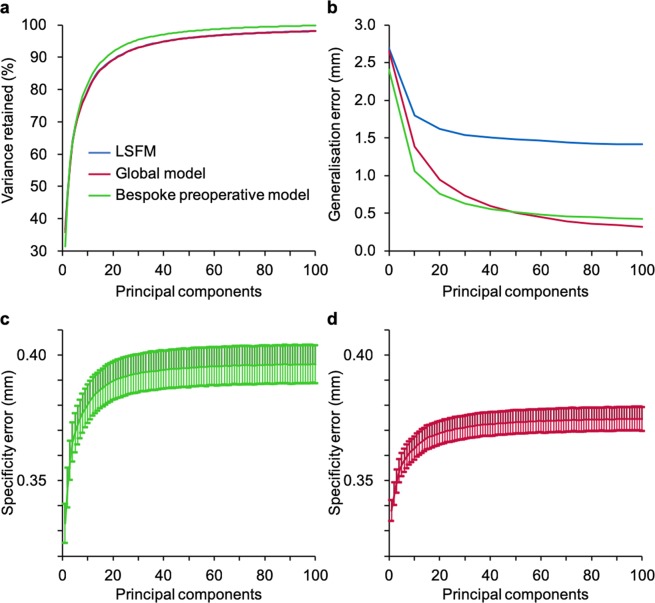Figure 1.
Compactness, generalisation, and specificity for the three models. Characterisation of the three 3DMM compared to the large-scale facial model (LSFM), a state-of-the-art benchmark. (a) Compactness (the amount of variance retained for a certain number of principal components) at 10 components amounted to 79.6% for the global model (red), 81.8% for the bespoke preoperative model (green) and 79.9% for LSFM (blue). (b) Generalisation (the ability to describe patient faces that were not used to construct the original model) at 100 components equalled to 0.3 mm, 0.4 mm, and 1.4 mm for the global model, bespoke preoperative model, and LSFM, respectively, indicating patient data are required to model patient faces accurately. (c) Specificity (how well synthetic faces resemble real faces) for the bespoke preoperative model showed an error of 0.40 ± 0.01 mm, and d, specificity for the global model showed an error of 0.37 ± 0.01 mm.

